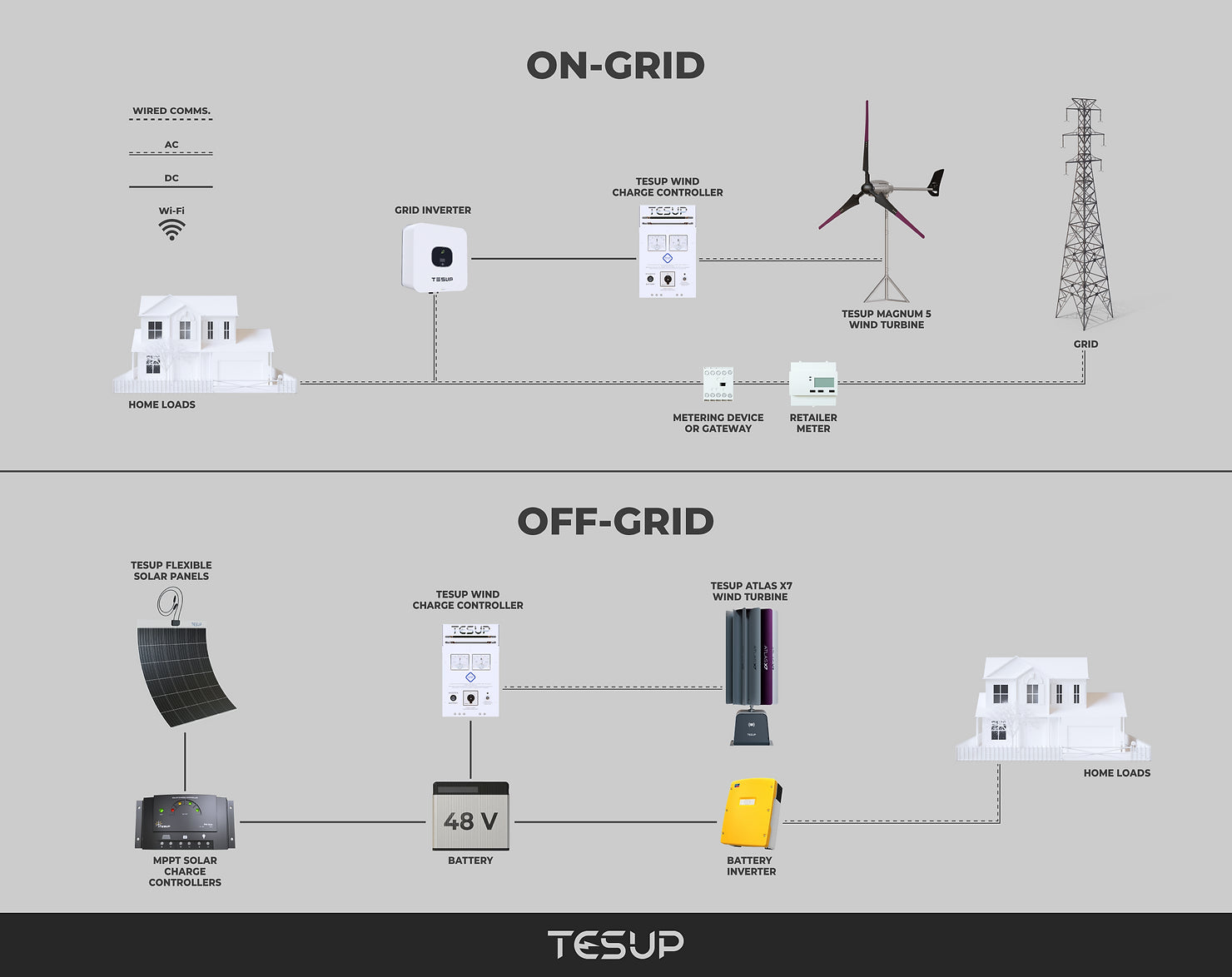
March 06, 2024
Solar and wind power are two awesome sources of renewable energy that can generate electricity for your home. But when it comes to choosing the right system, you might find yourself torn between on-grid (grid-tied) and off-grid options that use solar and wind power. Don't worry, we're here to help you understand the differences and make an informed decision. So, let's dive in!
On-grid systems, whether they're powered by solar or wind, are connected to your local utility's power grid. These systems work together with the grid, giving you an extra boost of power alongside what you receive from your utility company. If you go with solar power, on-grid systems use photovoltaic (PV) solar panels to generate electricity from sunlight. Any excess energy your panels produce goes back to the grid, earning you credits through net metering. That means if your solar system generates more energy than you use, you can offset your electric bills with those credits.
Pretty cool, right? Similarly, for wind power, on-grid systems use wind turbines to generate electricity. Any extra energy they produce also goes back to the grid, giving you a chance to earn credits. By being on-grid, both solar and wind systems save you the hassle and expense of needing battery backups to store excess energy. They provide a reliable source of electricity and can even save you some money on your electric bills through net metering. And don't forget, having the grid as a backup ensures you won't be left in the dark during times of high energy demand or when renewable energy generation falls short.
On the other hand, off-grid systems are independent and not connected to the electrical grid or utility company. These systems can combine solar panels and wind turbines to generate electricity, which makes them perfect for remote areas or places with unreliable grid access. Off-grid systems rely on battery storage to store the energy they generate from solar panels and wind turbines. That way, you'll have electricity even when the grid is down or during pesky power outages. This is a huge advantage, especially if you live in a remote area or an area prone to blackouts.
But hold on, there are a few things to consider before jumping into the off-grid world. These systems require a significant upfront investment, as you'll need to invest in battery storage to ensure you have enough energy stored for times when there's no sunlight or wind. And let's not forget about maintenance costs. Batteries may need some TLC and eventually replacement over time, which can add to your expenses. However, despite the initial investment, off-grid systems can bring long-term cost savings by eliminating those pesky electric bills.
Another great thing about off-grid systems is that they're relatively straightforward to set up. Since they don't need to be connected to the electrical grid, installation is simpler and less complicated. This is a big advantage, especially if you're looking for a self-sustaining renewable energy solution without too much hassle.
To sum it up, both on-grid and off-grid systems that use solar and wind power have their own amazing advantages. On-grid systems give you a reliable source of electricity that complements your grid power, with the added bonus of net metering and potential savings on your electric bills. They offer the benefits of solar and wind energy while keeping you connected to the grid, so you'll always have a backup power source when you need it.
On the flip side, off-grid systems provide complete energy independence, protecting you from power outages and potentially saving you money by eliminating those monthly electric bills. But remember, off-grid systems require a significant upfront investment in battery storage, and ongoing maintenance costs should be taken into account. When it comes to choosing between on-grid and off-grid systems, take some time to consider your specific needs and circumstances. That way, you'll find the option that suits you best.
